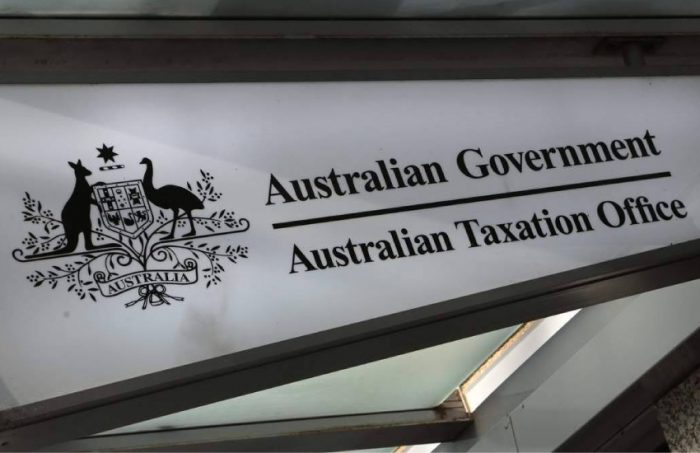How ASIC and the ATO regulate SMSF borrowing
Published
March 21, 2021
Published
March 21, 2021

Treasurer Josh Frydenberg has said the government doesn’t plan to make changes to Limited Recourse Borrowing Arrangements (LRBAs) – where self-managed super funds take out loans to buy an asset. One of the reasons? Government regulations are already restrictive to reduce SMSF borrowing risks.
Whether or not you agree with him, it’s important to at least understand how the government regulates LBRAs, what the risks are and who’s looking out for your interests if you have a self-managed super fund.
But first, here are some facts about what the two SMSF watchdogs – ASIC and the ATO – have found in the SMSF sector.
The SMSF sector
The number of SMSFs breaching the Superannuation Industry (Supervision) Act (SIS Act) – the super industry’s bible that underpins all that super funds should and shouldn’t do – is only around 2 per cent of all Australia’s DIY super funds, says Dana Fleming, the ATO’s Assistant Commissioner for Superannuation.
This low number means the majority of SMSF borrowers are doing the right thing. And out of those 2 per cent of funds being naughty, 50 per cent self-rectify their breach before lodging their tax return.

Alongside ASIC, the ATO is a major watchdog for Australian SMSF borrowing.
In the 2020 calendar year, the ATO disqualified 186 individual trustees (you can download the Disqualified Trustees Register here). Considering the SMSF industry has approximately 1.2 million members (and close to 600,000 SMSFs), the annual tally of SMSFs performing punishable misdemeanours is well below 1 per cent.
It’s true some SMSF advisers have taken advantage of their clients. But we should be careful before raising an eyebrow at financial planners and advisers.
They are a major bloodstream of the financial services industry, helping create wealth and plan a secure financial future for people like you and me. Unfortunately, there are a few bad eggs out there dirtying the profession for the many good eggs (more on this later).
Nonetheless, a small number of inept financial planners and accountants are a large reason for all the SMSF borrowing fuss.
Improving advice quality on SMSF borrowing
“SMSFs are a key priority for ASIC and we will continue to target inappropriate advice about SMSFs in our surveillance work,” says ASIC deputy Chairman Peter Kell, who is serious enough about poor advice to perform an in-depth review of over 100 client files.
As a result of the review, ASIC documented a number of practical tips and guides advice providers could use to sharpen their SMSF advice given to clients.
This includes a Disclosure of Risks, explaining the relevant conduct obligations and challenges trustees may face, and a Disclosure of Costs.
The latter is a key tool for those receiving advice, because setup and management costs can overwhelm unprepared SMSF members. ASIC wants those funds with a balance under $200,000 to consider the cost-effectiveness of their SMSF strategy – and understandably so. SMSFs can be an expensive wealth creation vehicle (although a high-yielding investment can be the answer for those mounding costs).
SMSF legislation
The government’s best weapon against poor SMSF advice and malpractice is undoubtedly putting pen to paper. Ironclad legislation has been introduced in recent years to protect SMSF members:
- In 2012, the government raised its benchmark for SMSF advice quality. It rolled out the Future of Financial Advice (FOFA) reforms, designed to improve the quality of financial advice, put a ban on certain remunerations, obligate advisers to review client’s fee structures ever two years and also enhance ASIC’s powers
- The Australian Financial Services (AFS) License exemption for accountants was removed, and since 1 July 2016 all accountants giving advice to clients about buying or selling assets in an SMSF are obligated to operate under an AFS Licence
- The financial advisers register was introduced on 31 March 2015, which lists key information on all who have provided personal advice to retail clients on financial products
- The Corporations Amendment (Professional Standards of Financial Advisers has just commenced on 1 January 2019 to increase the professional, ethical and education standards for financial advisers.
Promoting education
Having an ear to the ground, and being involved with industry experts on the frontline, is a massive focus for ASIC.
ASIC drew up a compliance program to promote trust and confidence in the super sector, two things lost on some in recent years (queue the Hayne Royal Commission). The program focuses on building relationships with parties in the SMSF industry. ASIC also provides tools, services and guidance to trustees and their advisers to better protect retiree nest eggs.
The ATO has become an SMSF educator too. Should an SMSF trustee breach super laws, the ATO may summon them to an SMSF education course.
SMSF Taskforce
The FOFA reforms gave ASIC enhanced powers and in 2012, in response to the SMSF sector’s rapid growth, ASIC established the SMSF Taskforce.
Its goal is to crackdown on specific malpractice in the SMSF industry, which is unfortunately prevalent in a world of complex financial products.
The Taskforce has claimed a rolodex of SMSF advisers’ scalps:
- Park Trent Properties Group Pty Ltd was found providing bogus advice to clients purchasing investment property through an SMSF. The property spruiker had its AFS Licence restrained. ASIC Deputy Chairman Peter Kell said of the matter, “this outcome demonstrates the courts, ASIC and the public will not tolerate this type of unscrupulous behaviour”
- In 2016, Ms Sarah Jane Busteed, an adviser in Sydney, was jailed for two years following inappropriate practice relating to SMSF property clients
- Omniwealth Services paid a $10,200 penalty for misleading claims on its website in 2015, regarding the advantages of investing in property within an SMSF (exaggerating the difference of a geared and ungeared SMSF property investment)
- SuperHelp Australia paid a $10,200 penalty in 2012 after making misleading statements about the cost of setting up SMSF (claiming free SMSF set up, but charging $475 upfront)
- In 2015, ASIC cancelled the credit licence of Queensland Smithson & Baye Pty Ltd. The credit provider was a promoter of self-managed super fund property investing and found collecting payments from borrowers in respect to additional loans (which lenders refused to provide).
Australia has watchdogs, taskforces and legislative weaponry protecting consumers from poor SMSF advice. But in the end – as is the flavour of a do-it-yourself super fund – the bulk responsibility falls on consumers to ensure a compliant self-managed super fund.
Properties & Pathways is a commercial property investor in Australia. Some of our investors use an SMSF to invest in commercial real estate because of the potential range of benefits involved. For more information on how you can invest alongside us, get in touch today. Note we are note providing advice in relation to the suitability of establishing or utilising a SMSF. Before making any significant investment decisions you should seek independent advice.






